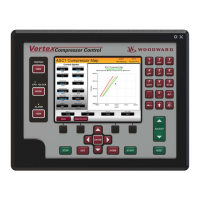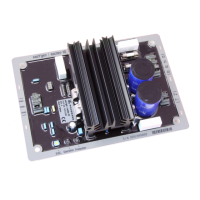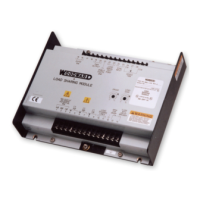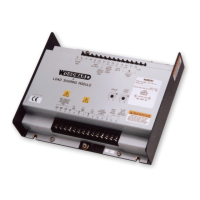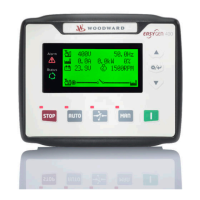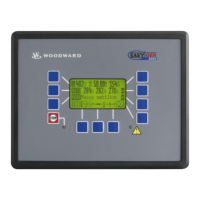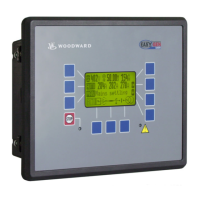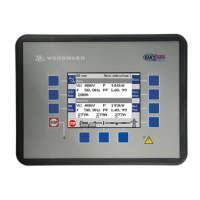Manual 26815 QuickTrip Electro-Hydraulic Trip Block Assembly
Woodward 35
Chapter 4.
Operation
Operating QuickTrip
Each QuickTrip consists of three independently operated modules referred to as A, B and C. Each
module accepts two redundant power inputs, one control signal input (to energize or de-energize the
actuator) and includes two trip feedback outputs (for de-energized/valve open state) and two run
feedback outputs (for energized/valve closed state). A logic solver, such as the Woodward ProTechTPS
or MicroNet Safety Module, is required to provide the control input signal and to monitor the feedback
outputs. The QuickTrip is a SIL-3 (according to IEC-61508) triple modular design that operates in a two-
out-of-three voting logic method. This means the QuickTrip will continue to function normally even if one
module is not operating correctly. It also means any module can be repaired online while the turbine is
on-line and operating normally.
Operation with ProTechTPS
QuickTrip is designed for use with a logic solver such as the Woodward ProTechTPS or MicroNet Safety
Module. If another logic solver is used, consult that manufacturer’s user’s manual for instructions for
interface, configuration and operation with QuickTrip. This section provides an overview of operating the
QuickTrip with ProTechTPS. For more detailed information, please consult the ProTechTPS product
manual.
Energizing QuickTrip Modules
With no alarm conditions present, any QuickTrip module can be energized by pressing the “RESET”
button on the ProTechTPS front panel. This places QuickTrip into a run mode (valves closed).
Tripping QuickTrip modules
Any QuickTrip module can be individually tripped by performing a simulated speed test (manual or auto).
These tests can be accessed through the ProTechTPS front panel display by pressing “Test Menu”. Refer
to ProTechTPS manual 26501V2, Chapter 11 for additional information.
Performing Auto-Sequence Test (Periodic Overspeed Test)
Since QuickTrip is a critical part of the turbine overspeed safety system, it is important to perform a
regular Auto-Sequence Test in order to verify unit health and to take advantage of the diagnostic
coverage provided by this test. The Auto-Sequence Test initiates an automated and sequential test of
each individual module and can be performed without interrupting turbine operation. The test begins with
ProTech module A automatically ramping up the module’s internal frequency generator until it exceeds
the overspeed set point at which time the control signal is interrupted and the QuickTrip module trips.
Then, this module resets and the test is repeated, sequentially, on modules B and C. Refer to
ProTechTPS manual 26501V2, Chapter 11 for additional information.
The Auto-Sequence Test can be accessed through the ProTechTPS front panel display by pressing “Test
Menu”, then “Auto-Sequence Test”. This test should be configured to run automatically by enabling the
Periodic Test Timer (set to “YES”). The Periodic Test Timer Interval should also be set. This interval can
be configured for intervals ranging from 1 to 999 days. Woodward recommends this interval be set
between 1 and 7 days in order to continually ensure QuickTrip health and to maintain its reliability when
used with dirty hydraulic oil. Refer to ProTechTPS manual 26501V2, Chapters 10 and 11 for additional
information.
View Trip Log
The trip log displays a log of any trip events. The trip log can be accessed by pressing the “VIEW” button
directly underneath the “TRIPPED” LED indicator on the ProTechTPS front panel. Refer to ProTechTPS
manual 26501V2, Chapter 9 for additional information.

